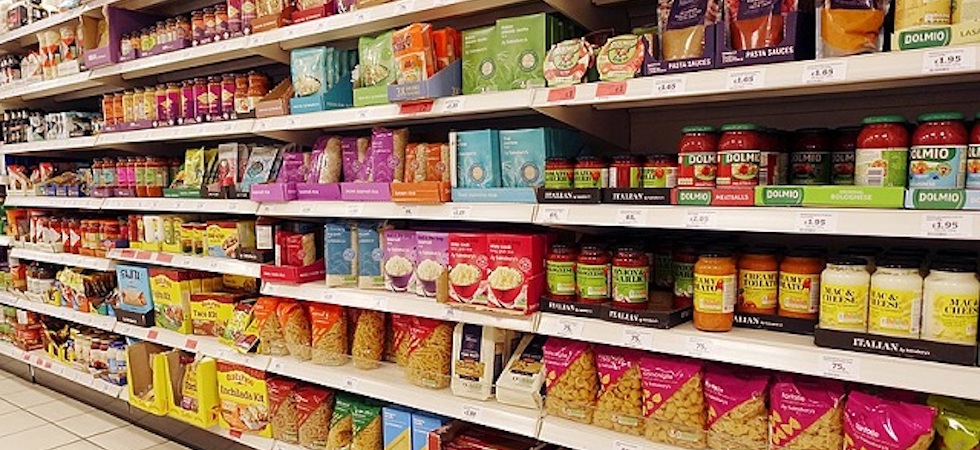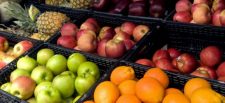IGD anticipates a five-year period of recovery that will see the market ‘bounce back’ to above pre-pandemic forecasts.
In its annual retail food and grocery channel forecasts, IGD predicts that the unprecedented 8.5% growth in 2020 will slow to 1.7% in 2021 and then to 0.9% in 2022, as shoppers economise and the eating out industry reclaims sales.
IGD forecasts that the sharp decline will be followed by a period of modest recovery, which will see the UK retail food and grocery market grow by 8.1% to £229.1 billion over 2021-2026. Recovery will be fuelled by rising employment levels, growing consumer confidence, economic recovery and the new channels and opportunities created by the unique disruption of Covid-19, such as quick commerce.
Simon Wainwright, director of global insight at IGD, said: “The significant dip we’re forecasting in the short term is to be expected; many households will be under increased pressures, making shoppers more value conscious. The reopening of the hospitality sector, despite being from a very low base, will also divert some spend away from retail in the short term.
“That said, there’s an opportunity for the sector to engage with the many shoppers that built up savings during the pandemic and contributed to the estimated £150 billion* savings pot, by focusing on quality and convenience as the ‘K-shaped recovery’* takes hold.
“Longer term, the grocery sector will remain bigger than our pre-pandemic forecasts, primarily driven by elevated levels of homeworking benefitting stores in suburban areas, the adoption of digital technologies in-store which will alter how and where people shop, and fewer out-of-home eateries operating. Maximising growth will be down to stores inspiring shoppers with an improved choice of relevant products and developing opportunities around events and occasions.”
Key highlights from the channel forecasts are:
Online to retain 2020 gains and become the fastest-growing channel post-2024
2021-26: +£4.7 billion (+21.4%)
Online will slow after the 2020 growth, as some shoppers, particularly the older demographic, return to stores. However, new capacity and the new quick commerce channel – which sees food and grocery delivered in less than one hour and often sub-30 minutes – will see online become the fastest-growing channel post-2024.
Simon Mayhew, head of online retail insight at IGD, commented: “Quick commerce has exploded as a result of the pandemic and is now a channel in its own right with a current estimated current value of £1.4bn. The size of the opportunity is significant and has the potential to grow to £3.3bn. Multichannel retailers will need to reduce fulfilment costs and nurture loyalty to protect margins as the online channel takes a greater share of the sales mix.”
Discount will be the fastest-growing channel 2021-2026
2021-26: +£6.6 billion (+23.8%)
A combination of new stores, the need for many shoppers to economise and the increase of food and grocery within variety discounters will fuel this channel’s growth, but it will slow through the forecast period.
Maxime Delacour, senior retail analyst and specialist in the discounter channel, explained: “Discounters are a natural destination for households looking to economise and the key players have extensive expansion plans. But growth will be held in-check by strong competition on value from the multiples and new entrants to the market.”
Neighbourhood focus to boost convenience
2021-26 +£5.5 billion (+12.5%)
Over the next few years, a continued focus on neighbourhood locations underpinned by the higher levels of working from home and suburban living will boost the convenience channel. The reopening of city centres and transport locations will also add to short term growth.
Patrick Mitchell-Fox, senior business analyst, IGD said: “The historic significance of ‘impulse’ has declined and now top-up shopping is more dominant for the convenience sector: basket sizes have become much larger with a wider range of goods.
“The convenience sector is now focusing on how it retains its current 21% share of the grocery market, by focusing on neighbourhood stores and extending ranges to meet local demand. We expect it to maintain its position over the next five years and predict it will grow to 21.8% by 2026.”
Large stores to reposition as retail destinations
Supermarkets 2021-2026 +£0.8 billion (+0.9%) Hypermarkets 2021-2026 –£0.4 billion (-2.3%)
In the short term, hypermarkets are well positioned to benefit from the K-shaped recovery, offering a wide range of value-oriented options whilst simultaneously offering the most extensive choice of products for shoppers looking to trade up.
Nick Gladding, senior retail analyst at IGD, explained the longer-term implication: “Shoppers will need to justify the time and travel to large stores as other, more convenient options become increasingly available to them. Operators will need to offer distinct benefits to attract customers. We’ll see more investment in this channel to position large stores as retail destinations.”
* Bank of England Speech: Inflation: A Tiger by the Tail?, 26 February 2021









